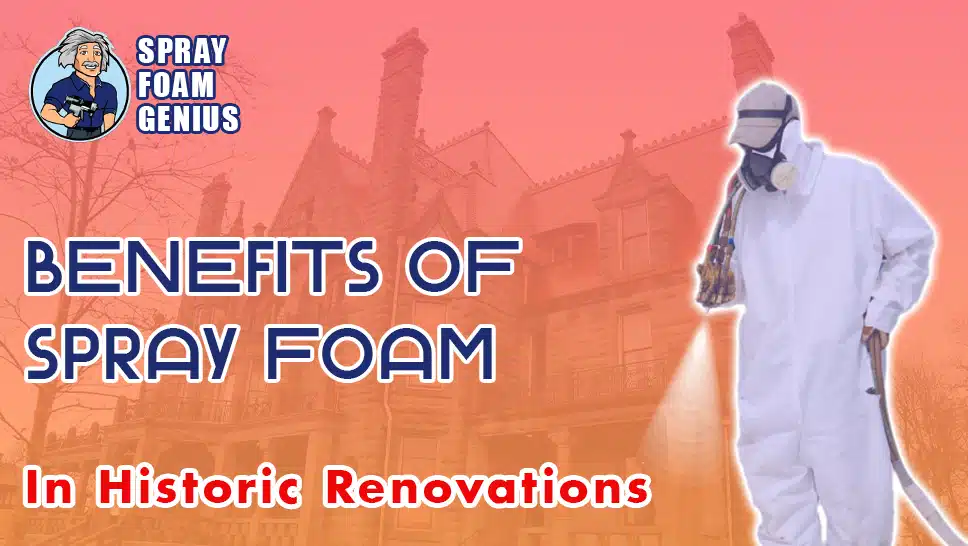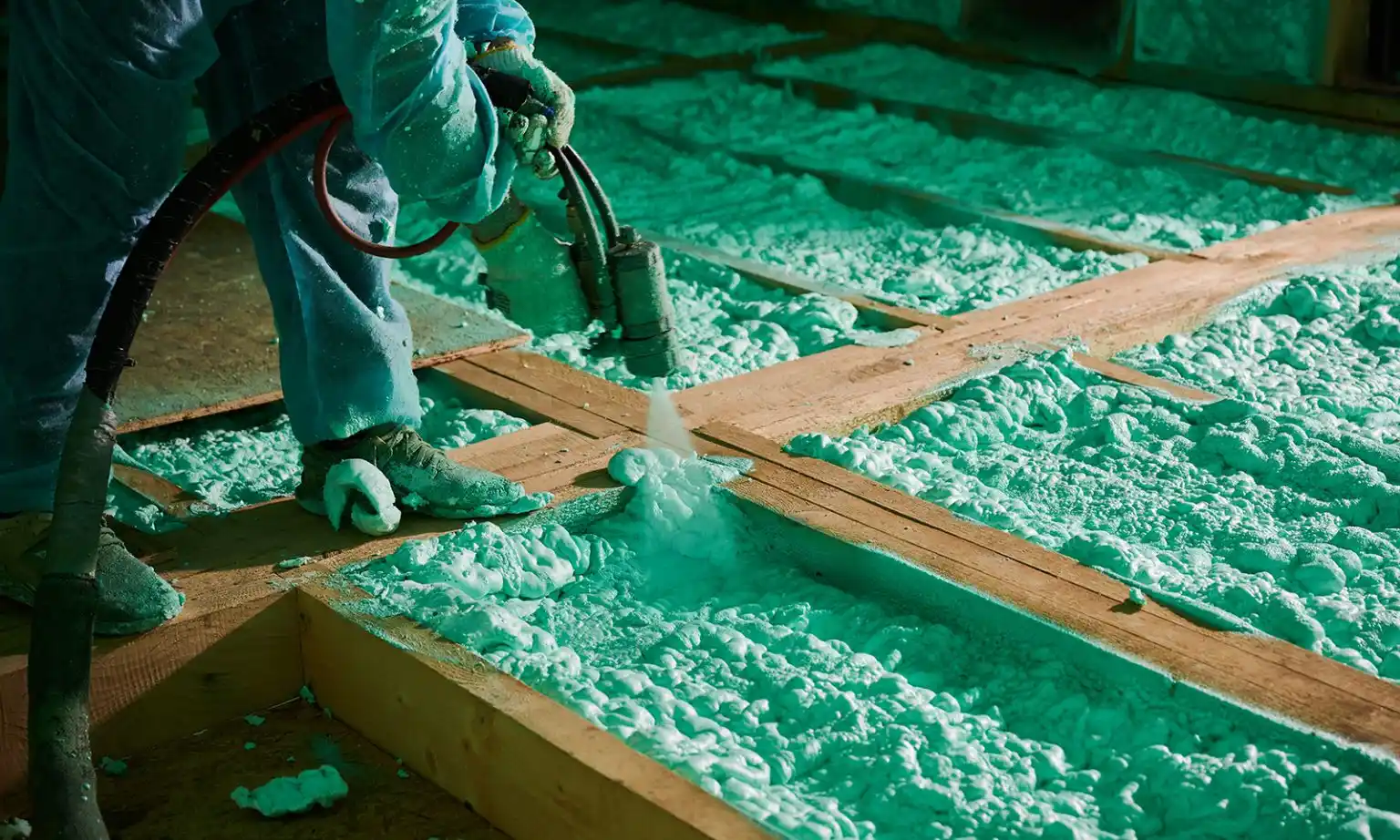
Renovating historic buildings requires a delicate balance between preserving the architectural heritage of the past and incorporating modern building techniques that enhance comfort and functionality. For contractors specializing in the renovation of these treasured structures, it’s vital to understand which contemporary methods can be employed without compromising their original charm. One such method is the use of spray foam insulation, a modern solution that can deliver significant benefits in terms of energy efficiency, structural protection, and overall comfort.
Spray foam insulation has quickly become a preferred choice for many contractors working on historic buildings. It is a highly effective way to insulate older structures without causing damage to their aesthetic or architectural integrity. As a contractor in the spray foam industry, understanding the advantages of spray foam insulation in historic renovations is crucial. This knowledge not only helps you offer a superior service but also positions your business as an expert in historic property restoration.
The Importance of Preserving Historic Buildings
Historic buildings are much more than just aging structures. They are valuable representations of our cultural heritage, showcasing the architectural styles, materials, and craftsmanship of the past. Whether it’s a grand Victorian mansion or a quaint colonial home, these buildings tell the stories of the eras in which they were constructed. Preserving them allows future generations to experience the beauty and character of a bygone age.
One key aspect of historic preservation is ensuring that any improvements or renovations respect the building’s original features. The goal is to enhance the building’s functionality and longevity without altering its character or aesthetic appeal. Traditional insulation materials can be invasive and ineffective, making spray foam insulation a game-changing alternative. Spray foam provides modern-day benefits, such as energy efficiency, moisture control, and structural reinforcement, all while allowing contractors to preserve the building’s historical value.
Why Spray Foam is Ideal for Historic Building Renovations

1. Minimally Invasive Installation
One of the greatest advantages of using spray foam insulation in historic building renovations is that it can be installed with minimal disruption to the structure. Unlike traditional insulation methods that often require tearing down walls or ceilings, spray foam is applied as a liquid and expands to fill gaps. This means that it can be installed without significant demolition, preserving the original architecture and historical details that define the building’s character.
For example, traditional insulation methods like fiberglass or cellulose require removing large sections of walls or floors, which can lead to the loss of irreplaceable architectural elements. Spray foam’s ability to expand into small crevices ensures that all areas are sealed without the need for extensive and invasive renovations.
By choosing spray foam insulation, contractors can respect the integrity of the original design while making significant improvements to the building’s energy efficiency. This minimally invasive approach reduces the risk of damaging important features such as moldings, woodwork, or plaster, which are often critical to the historic value of the property.
2. Superior Energy Efficiency
Historic buildings were typically not designed with modern energy efficiency standards in mind. Drafty windows, uninsulated walls, and aging heating systems often result in high energy costs and an uncomfortable indoor environment. For these buildings, spray foam insulation provides a solution that helps reduce energy consumption and improves comfort for the building’s occupants.
Spray foam creates an airtight seal, preventing air leakage and reducing thermal bridging, which is a major cause of heat loss in older buildings. Closed-cell spray foam, in particular, provides a high R-value (the measure of insulation’s resistance to heat flow), which significantly improves the building’s ability to retain heat during the winter and stay cool in the summer. This increase in energy efficiency can lead to substantial savings on energy bills while making the building more comfortable for those living or working in it.
In addition to energy savings, spray foam insulation contributes to the building’s sustainability by reducing its overall carbon footprint. Property owners who invest in spray foam for historic renovations can take pride in the fact that they are preserving a piece of history while also embracing eco-friendly solutions.
3. Moisture Control and Mold Prevention
One of the most significant threats to historic buildings is moisture infiltration, which can lead to serious structural damage over time. Water can penetrate through gaps in walls, windows, or roofs, leading to problems like wood rot, mold growth, and the degradation of other building materials. Traditional insulation materials like fiberglass and cellulose are susceptible to absorbing moisture, which can exacerbate these issues.
Spray foam insulation offers an effective solution to moisture problems. It acts as a barrier against water penetration, preventing moisture from entering the building in the first place. Additionally, because spray foam does not absorb water, it helps to prevent the conditions that allow mold to thrive. By sealing off potential entry points for water and ensuring that the building stays dry, spray foam can significantly extend the lifespan of a historic property.
Moisture control is particularly important in historic buildings because many older construction methods relied on materials like wood, which can be highly susceptible to damage from prolonged exposure to water. By applying spray foam insulation, contractors can help protect these vulnerable materials from the damaging effects of moisture.
4. Enhanced Structural Integrity
Another important benefit of spray foam insulation, particularly closed-cell spray foam, is its ability to enhance the structural integrity of a building. When applied, closed-cell foam hardens and adds rigidity to the structure, helping to reinforce walls, ceilings, and roofs. This increased strength can be particularly valuable in historic buildings that may have weakened over time due to age and exposure to the elements.
Spray foam can help protect against damage caused by external forces, such as wind or minor seismic activity, which might otherwise compromise the structural stability of an older building. In many cases, this added strength can extend the life of the building, making it more resilient to environmental stresses.
For contractors working on historic renovations, offering spray foam insulation can provide added value by not only improving energy efficiency but also strengthening the overall structure of the building. This is especially important in cases where the building may have been weakened by years of wear and tear, ensuring that the renovations will stand the test of time.
5. Noise Reduction
Many historic buildings were not built with modern noise reduction techniques in mind, meaning that sound can easily travel through walls, floors, and ceilings. In urban areas, this can be a particular problem, as noise from outside sources can disrupt the peace and tranquility of the building’s interior.
Spray foam insulation is an effective soundproofing material. Its dense, foam-like composition absorbs sound waves, reducing the amount of noise that can pass through walls and floors. This can be especially beneficial in multi-story buildings or those located in busy areas where external noise is a constant issue.
By reducing noise transmission, spray foam insulation can make historic buildings more comfortable and desirable for occupants, whether they are used for residential or commercial purposes. For contractors, highlighting the soundproofing benefits of spray foam can be a persuasive selling point when offering renovation services to potential clients.
Partnering with Spray Foam Genius Marketing to Grow Your Business
Understanding the benefits of spray foam insulation in historic building renovations is essential for growing your business as a spray foam contractor. Offering this specialized service allows you to tap into a niche market of property owners and preservationists looking for effective solutions that honor the past while embracing the future.
At Spray Foam Genius Marketing, we specialize in helping spray foam contractors grow their businesses through professional SEO, Google My Business optimization, lead generation, and more. Our team understands the unique challenges and opportunities in the spray foam industry and can help you position your business as an expert in historic building renovations.
Call us at 877-840-FOAM for USA and 844-741-FOAM for Canada visit our website at sprayfoamgeniusmarketing.com, or email us at [email protected] to get started.
We’ll help you connect with clients who value quality, preservation, and the many benefits that spray foam insulation can provide.
- 5 Google My Business Hacks to Double Your Leads for Spray Foam Insulation Contractors - January 14, 2025
- Why Spray Foam Contractors Cannot Ignore Reputation Management in 2025 - January 13, 2025
- Local SEO Secrets Every Spray Foam Contractor Must Know to Win in 2025 - January 13, 2025

